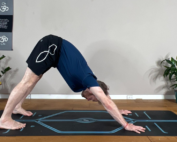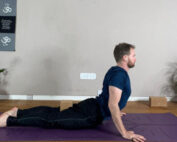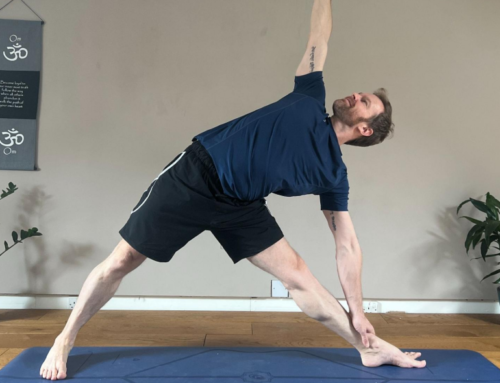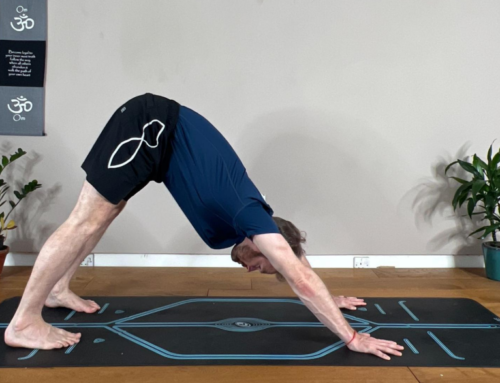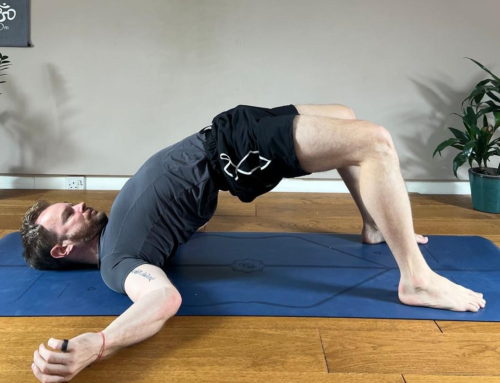
6 Transformative Dancer Pose Variations
Welcome to our deep dive into the world of Dancer Pose Variations! I’m Dav Jones, a dedicated yoga teacher and teacher trainer passionate about guiding yogis through their practice, whether you’re stepping onto the mat for the first time or looking to deepen your practice with advanced techniques. Today, we’re exploring the beautiful Natarajasana or Dancer’s Pose. We’ll have a look at the benefits of the pose, dancer pose variations, and how to practice safely. If you’re curious to expand your yoga journey, you’re in the right place.
What is the Dancer Pose?
Dancer Pose, or Natarajasana, combines balance, concentration and flexibility. It’s a posture that combines a backbend, a hip-opener and a balancing pose all in one posture. This pose is named after Lord Shiva, known as Nataraja, the lord of dancers. In Hindu mythology, Shiva’s dance signifies the cosmic cycles of creation and destruction. Natarajasana reflects this balance, embodying grace and the flow of life.
Dancer Pose (Natarajasana)
Sanskrit: Natarajasana
Pronunciation: nata-raja-asana
Meaning of Natarajasana: “Nata” means dancer, and “Raja” signifies king. It refers to Lord Shiva’s cosmic dance, embodying creation and destruction.
Step-by-Step Guide to Entering the Dancer Pose
This guide provides straightforward steps to enter Dancer Pose, a fusion of balance, strength, and flexibility. It’s designed to help practitioners of all levels safely achieve the elegance and stability inherent to Natarajasana, guiding you toward mastering this asana.

Establish a solid foundation by grounding through your feet, focusing your mind on the present moment, and setting your gaze on a fixed point ahead to aid balance.
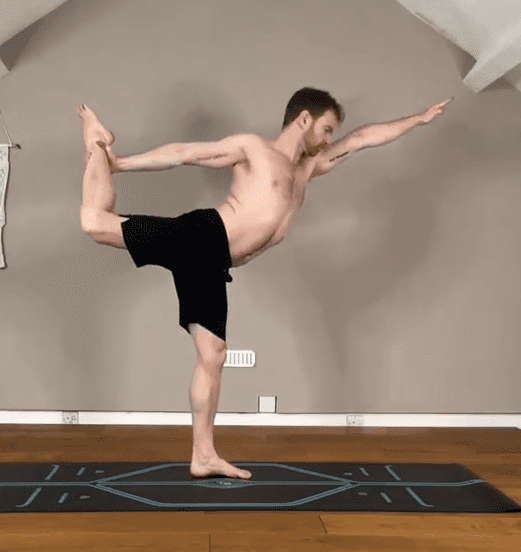
Shift your weight to one foot. Collect the inside of the right foot with your right hand. Lifting the foot off the floor. Extend your other arm forward, keeping it parallel to the ground, to counterbalance.
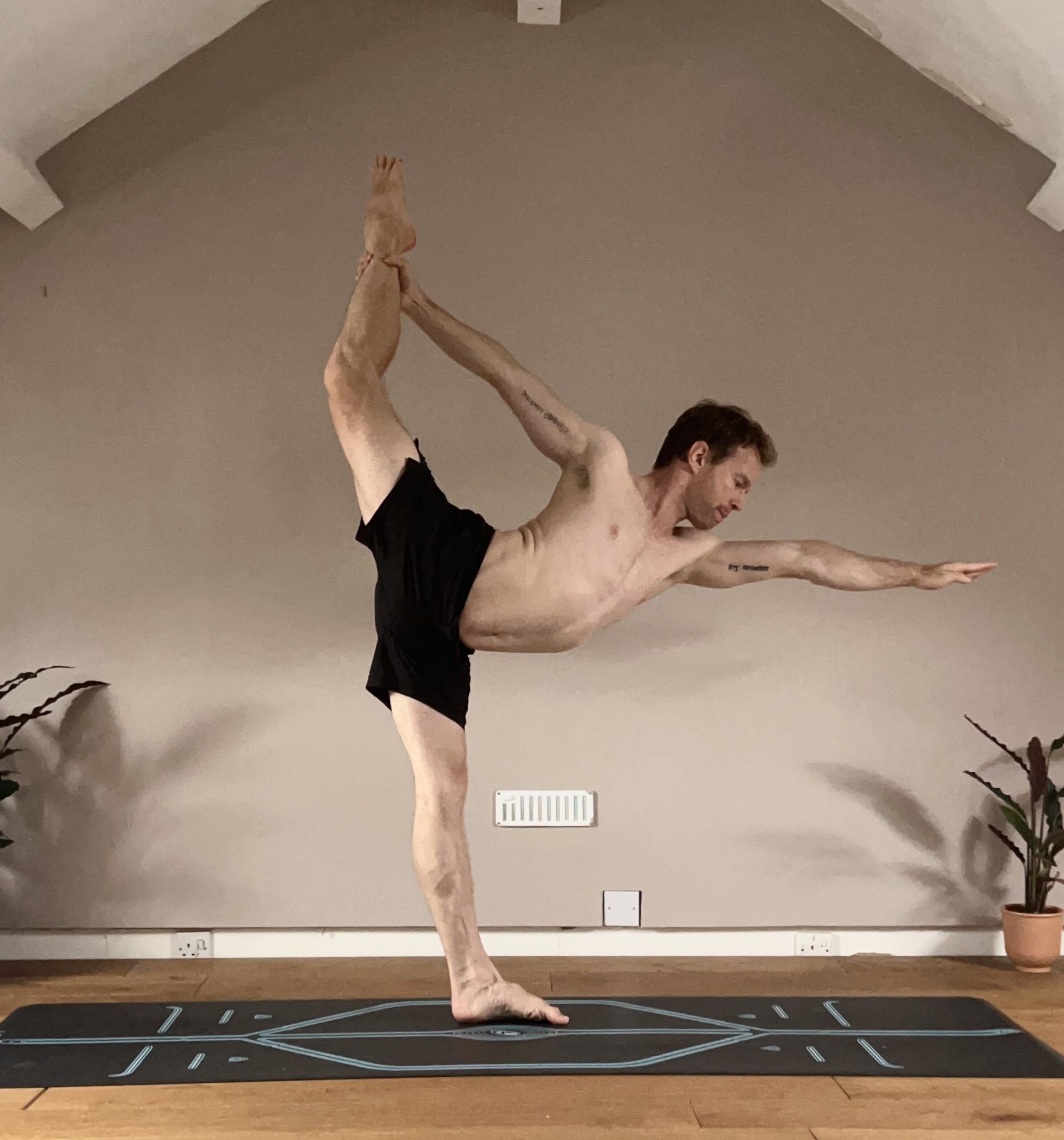
Gently kick your foot into your hand, and equally pull at the rear foot with the arm. Lifting the thigh higher while your torso leans forward and down, creates a beautiful arc. The intensity of the stretch will increase gradually, as you maintain focus and stability.
6 Dancer Pose Variations
Dance Pose Variation is a dynamic asana that symbolizes balance, concentration, and elegance in yoga practice. To accommodate varying skill levels and enhance the benefits of this pose, we will explore 6 Dancer Pose Variations (Natarajasana). These adaptations aim to make the pose more accessible, allowing practitioners to enjoy the benefits of the yoga asana practice regardless of their experience.
Variation 1: Prone Dancer Pose
Level: All Levels
The Prone Dancer Pose is a lying-down version of the classic Dancer Pose, designed to enhance back strength and flexibility without the added challenge of balancing on one foot. Dancer Pose Variations allow practitioners to focus more on the stretch and flexibility aspects of the pose, making it an excellent variation for opening the muscles of the chest and legs and front of the hips.

Steps:
- Begin by lying on your stomach with your arms by your sides.
- Bend one knee, bringing the heel towards your buttock.
- Reach back with the same-side hand to grasp the inside of your foot or ankle.
- Gently pull your foot towards your body, lifting both your thigh and chest off the mat.
- Hold the pose for a few breaths, then release and repeat on the other side.
Benefits:
Don’t Do This Pose If:
Variation 2: Kneeling Lunge Quadricep Stretch
Level: Beginner/intermediate
This foundational stretch is essential for preparing the muscles for more advanced Dancer Pose Variations. Slightly more challenging than variation 1, this variation primarily focuses on improving flexibility in the hips and quadriceps, which is essential in creating space for Dancer’s Pose.

Steps:
- Come into a kneeling lunge with your left foot forward, right knee on the mat, or kneepad if you have sensitive knees.
- Bend your right drawing heel towards your right glute and reach back with your right hand, collecting the foot.
- Holding the foot, gently ease the foot towards your right hip during each exhale breath. Try to maintain the contraction of the right glute throughout the posture.
- Hold and Breathe: Hold this position for 15-30 seconds, taking deep breaths. Focus on a gentle stretch through the front of your thigh.
- Release and repeat: Gently release your right foot back to the ground. Shake out your legs if necessary, then repeat the stretch on the left side.
Benefits
Don’t Do This Pose If
Variation 3: Kneeling Lunge Dancer Variation
Level: Intermediate
This kneeling lunge Dancer Pose Variations adds spinal extension compared to variation 2. This pose sufficiently opens up the chest and shoulders and provides a strong stretch for the rear hip. A great proprietary for the standing version of Dancer’s Pose.

Steps:
- Find yourself a strap and create a loop at one end. Come into a kneeling lunge, left foot forward, right knee on the mat, and place the rear foot into the loop of the strap.
- Holding the strap with both hands, stretch the arms upward. Lean your weight into the front foot. This will bring a stronger stretch to the rear hip.
- Try to keep tension by pulling upwards with the arms and pushing downwards with the rear foot. These opposite forces at play can help to create an even arc through your spine. This helps to evenly distribute the load in the backbend.
- Maintain the pose for up to 8 full breaths, release slowly, and then repeat on the other side.
Benefits:
Don’t Do This Pose If:
Variation 4: King Dancer Pose with Strap
Level: Intermediate
This Dancer Pose Variations uses a yoga strap to make the pose more accessible, especially for those with limited flexibility. By using a strap, practitioners can achieve the posture and its benefits without the need for extreme flexibility, making it an inclusive option for a wider range of abilities.

Steps:
- Stand tall, focusing on a fixed point for balance.
- Loop a strap around the foot of the leg you intend to lift.
- Hold the strap with both hands, depending on your flexibility.
- Gently pull on the strap to lift the foot towards the back of the body, maintaining a balanced posture.
- Try to keep tension by pulling upwards with the arms and pushing back and up with the rear foot. These opposite forces at play can help to create an even arc through your spine. This helps to evenly distribute load in the spine for the backbend.
- Keep your gaze fixed at a fixed point, spending 8–10 breaths in the pose. Expand your ribcage on the inhale, and move into any noticeable space of your shoulder and hip joints on the exhale. With enough patience in breathing in this posture, increased range in the pose can be explored.
- Repeat these steps on the other side.
Benefits:
Don’t Do This Pose If:
Variation 5: Standing Bow Pose (Dandayamana Dhanurasana)
Level: Intermediate
Standing Bow Pose is a dynamic balancing pose from Bikram Yoga, characterized by a deep backbend and a significant stretch along the front of the body. This pose is a strong stretch for the hamstrings of the standing leg and the hips and quadriceps of the lifted leg. This pose also creates an intense starch for the chest and rear arm holding the foot/ankle.

Steps:
- Begin in a standing position, weight evenly distributed on both feet.
- Bend your right knee and use your right hand to grasp the inside of your right foot or ankle.
- Extend your left arm straight up, palm facing down.
- Focus on a point in front of you to maintain concentration and balance.
- Gently kick your right foot into your right hand, lifting your leg up and back, while simultaneously pulling the leg with the rear arm. Simultaneously, reach straight ahead with the front arm.
- Gradually bring the torso in a downward motion to where the upper body is parallel to the floor. Work towards squaring the rear hip towards the mat.
- Hold the pose for several breaths, then gently release and repeat on the opposite side.
Benefits:
Don’t Do This Pose If:
Variation 6: Full Natarajasana
Level: Advanced
This Dancer Pose Variation enhances the classic Dancer Pose by adding a deeper backbend that incorporates the entire spinal column. Full Dancer’s Pose is demanding, opening the shoulders, chest, and hips whilst aiming to do all this by balancing on one foot.

Steps:
- Practice this variation once you feel competent and have the relevant flexibility. Refer to variation 4 (King Dancer with a Strap). If you’re able to reach back for the rear foot with both arms without the use of the strap, then this advanced version of Full Dancer’s pose is for you.
- Once you’re poised in the balance of Natarajasana, work towards straightening through the arms and straightening the knee through the rear leg.
Benefits:
Don’t Do This Pose If:
Benefits of the Dancer Pose Family:
Dancer Pose (Natarajasana) is a beautiful and challenging asana that combines balance, strength, flexibility, and concentration. Here are the overall benefits of practicing Dancer Pose and Dancer Pose Variations:
- Improves Balance: Dancer Pose challenges and enhances your ability to maintain balance, both physically and mentally, by focusing your attention and stabilizing your body.
- Strengthens the Legs: The standing leg in Dancer Pose works hard to stabilize and support the entire body, thereby strengthening the muscles of the thighs calves, and ankles
- Stretches the Shoulders and Chest: As you reach back to grab your foot or ankle, the pose opens up the shoulders and chest, improving flexibility in these areas.
- Enhances Flexibility of the Back: The backbend aspect of Dancer Pose helps in increasing spinal flexibility, promoting a mobile spine, and improving posture.
- Opens the Hip Flexors: The lifted leg in Dancer Pose stretches the hip flexors of the standing leg, contributing to increased hip flexibility.
Modifications and Tips
Final Thought
Whether you’re taking your first steps into the world of yoga or you’re an experienced practitioner seeking to deepen your skills, our online classes provide tailored instruction for mastering the Dancer Pose Variations. Connect with Dav Jones Yoga on the Patreon channel or have a look at the DJY Mentorship programs. Learn how we can support your journey toward achieving strength, balance, and focus through this powerful posture.



